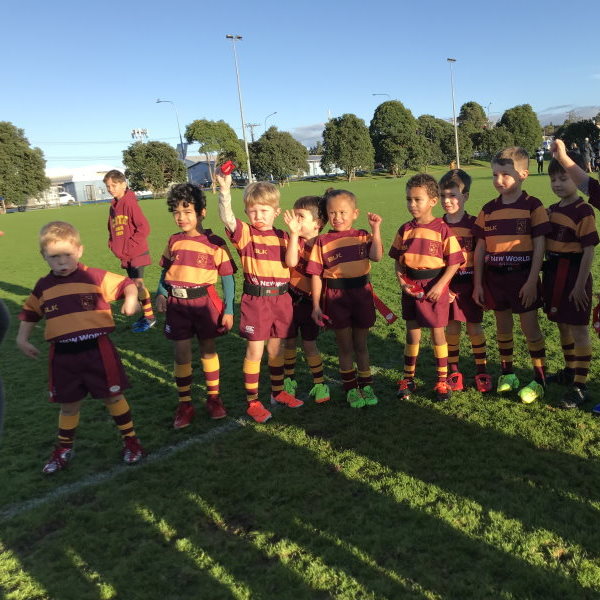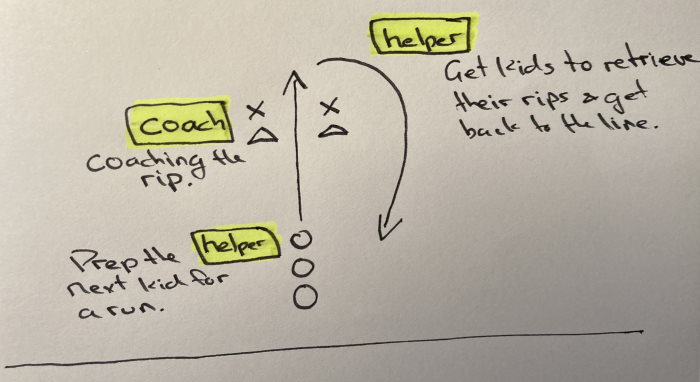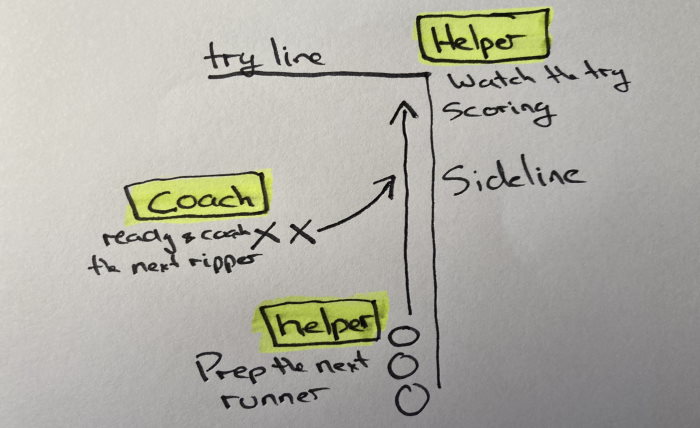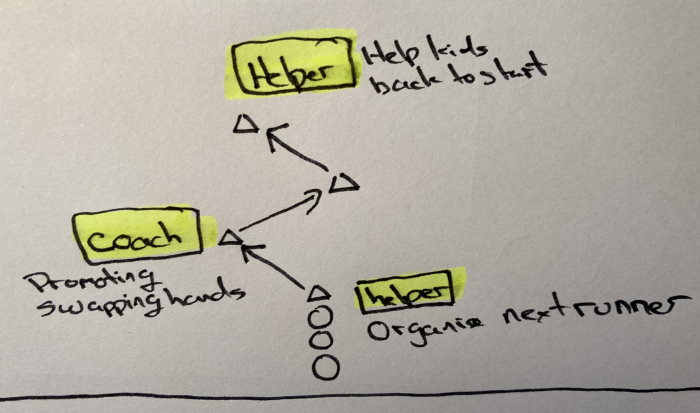
J8
J8 Skills
At J8 level our goal is to give kids time and confidence running with the ball in hand and in the right direction. At each game, we aim to ensure that each kid gets their chance to have a run with the ball.
- Categorydrills | skills
- Last UpdatedSep 2021
At J8 we are dealing with 5 and 6-year-olds. This is often their first experience of an organised sport with training and part of the year is becoming familiar with paying attention to the coach and performing skills with other kids. You may be new as a coach at this level but consider that this may be even newer for your players.
This article is about giving you some guidelines towards what individual skills you want to have taught to your players by the end of the year. It is by no means the only things but it does cover the skills for the age and what we aim for kids to be able to do when they start J7.
Rips
One of the key skills of the game is making rips. When teaching and explaining the rip a good approach is to have them watch the rip they are going for and not the player running. We also want them to grab the rip about in the middle. This gives them space for their hand to get a good grip. One mistake can be going for the rip at the top where it is attached and they won't be able to grab it there.
Having the players watch and target the middle of the rip also sets them up with the right skill when they come to the first-year tackle. The middle of the rip is about thigh height and the right target when making a tackle. If they are already looking at the area for the rip it will be an established skill when they come to tackling later in J6.
A simple drill to practice ripping is to have two kids standing one meter apart with the rest of the players lined up to run between them. Ripper on the right must use their left hand, ripper on the left must use their right hand as the runner runs between them carrying the ball.

To help rippers just use one hand have them hold a tennis ball in the other.
A second rip drill is having the ripper chase the runner. Set up a straight sideline run to the try line for the runners to go down and set the rippers up run across and intercept them to make a rip.

Close Contact
Though Rippa is non-contact it is close contact. Enabling confidence in close quarters is important. Some kids will just love it while some will be very hesitant. Sometimes it's the worry about getting hurt but it can also be the worry about hurting someone else. If we think about what happens when someone accidentally hurts someone at kindy, what happens? Lots of attention to the injured and cautions and reprimands to the accused?
A game. Wrap a rip belt and each of your thighs and waist and attach as many rips as you can. Then in a three-meter square box have teams of three try and grab as many rips off of you in 30 seconds as you move around. This can be a great way to help the not so confident become confident making in making rips in close contact. You can of course make it easier or harder for different groups of kids to build that confidence. Be warned 30 seconds, 6 times is a lot more tiring than you may think.
Running
The other major aspect of the game is running with the ball. One aim is that kids don't run backwards. It is good to be able to run with the ball under each arm.
A drill. Setup up a zig-zap course. Have the kids put the ball under one arm and run to the first cone. When they get there they must swap the ball to the other arm and run to the next cone and so on. This helps build that confidence in running with teh ball as well as starting to learn some agility trying to co-ordinate some different tasks at the same time.

Try Scoring
Squash the worm. Practising scoring tries and understanding that they need to control the ball to score a try is another important concept. Though refs may give tries even though the ball was dropped at this level it's important that we ensure kids know that it's not ok. It's really hard when they move to J7 or get a ref who won't ignore that mistake and they suddenly don't understand why their try now doesn't count when it always counted before.
You can set up a game of scoring at three or four different points and make a race of it. Any incorrect scoring means they have to score it again before moving to the next point.

